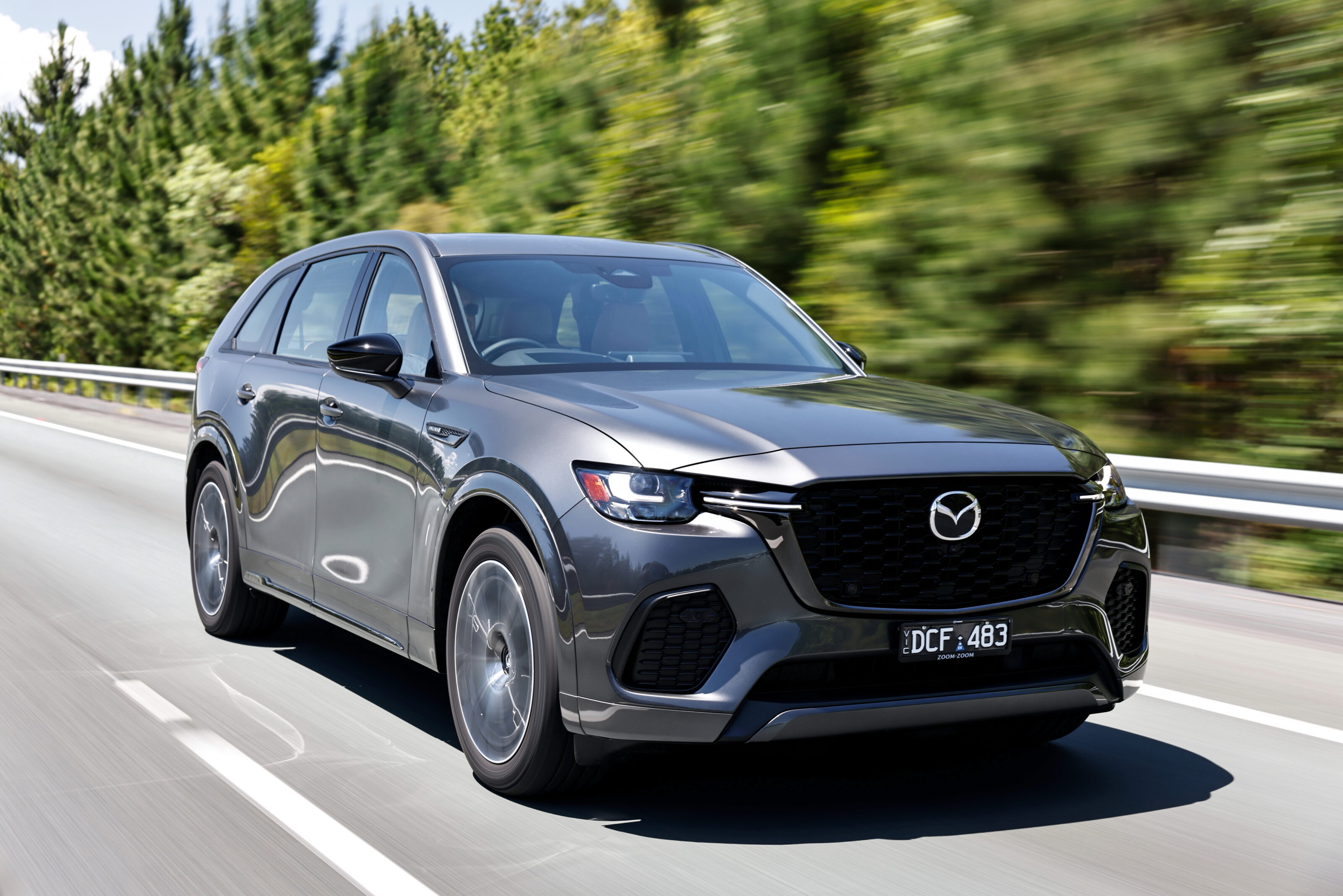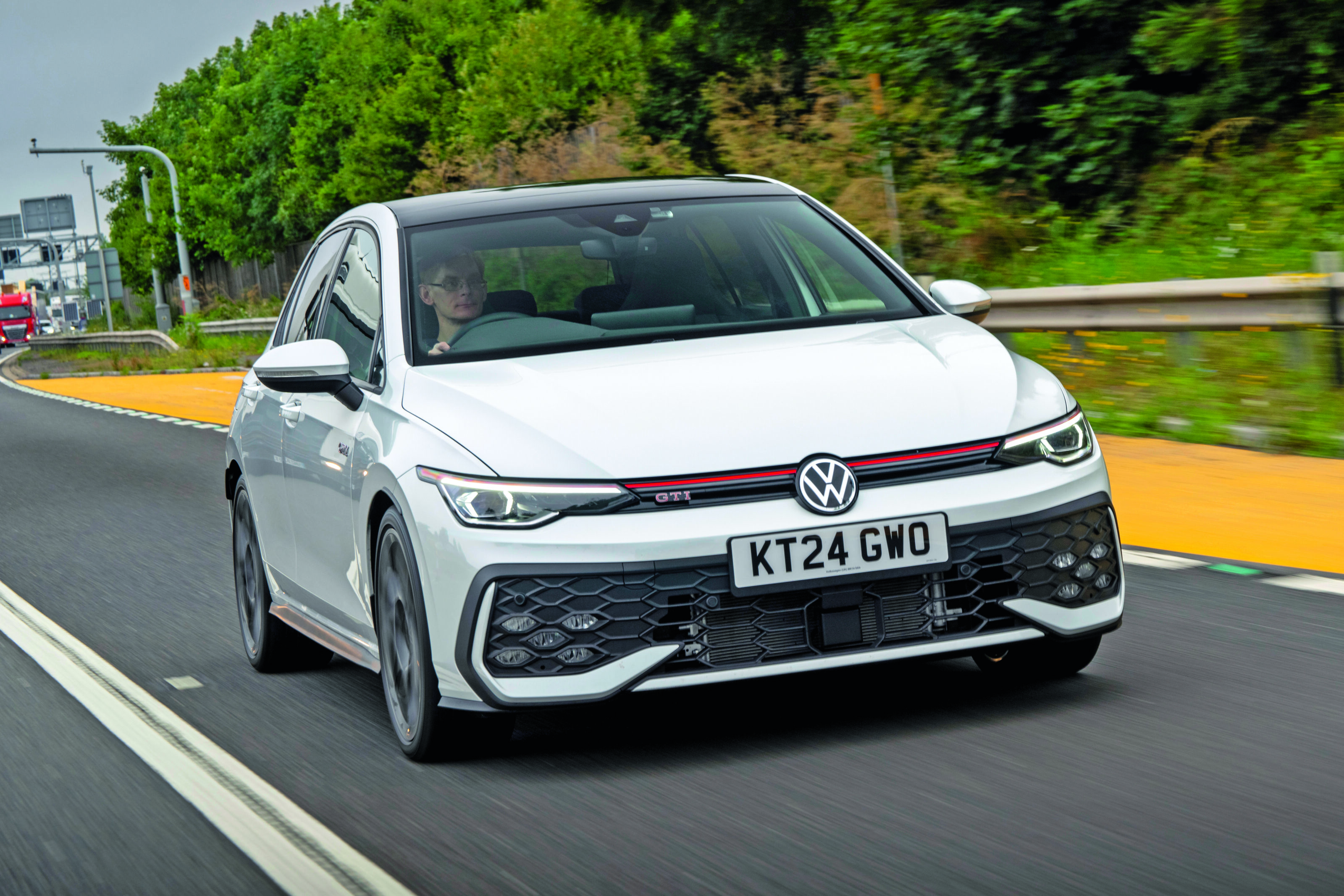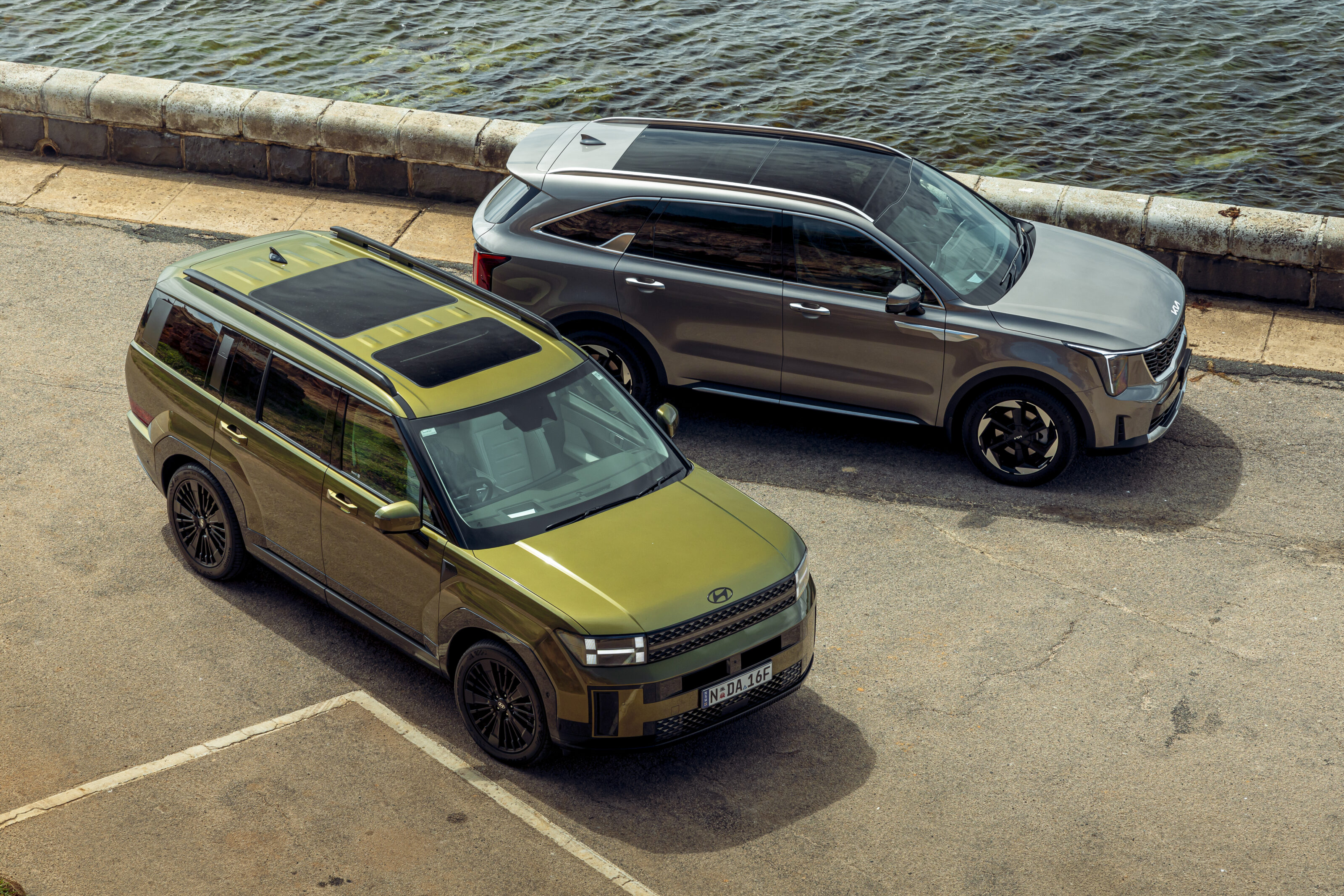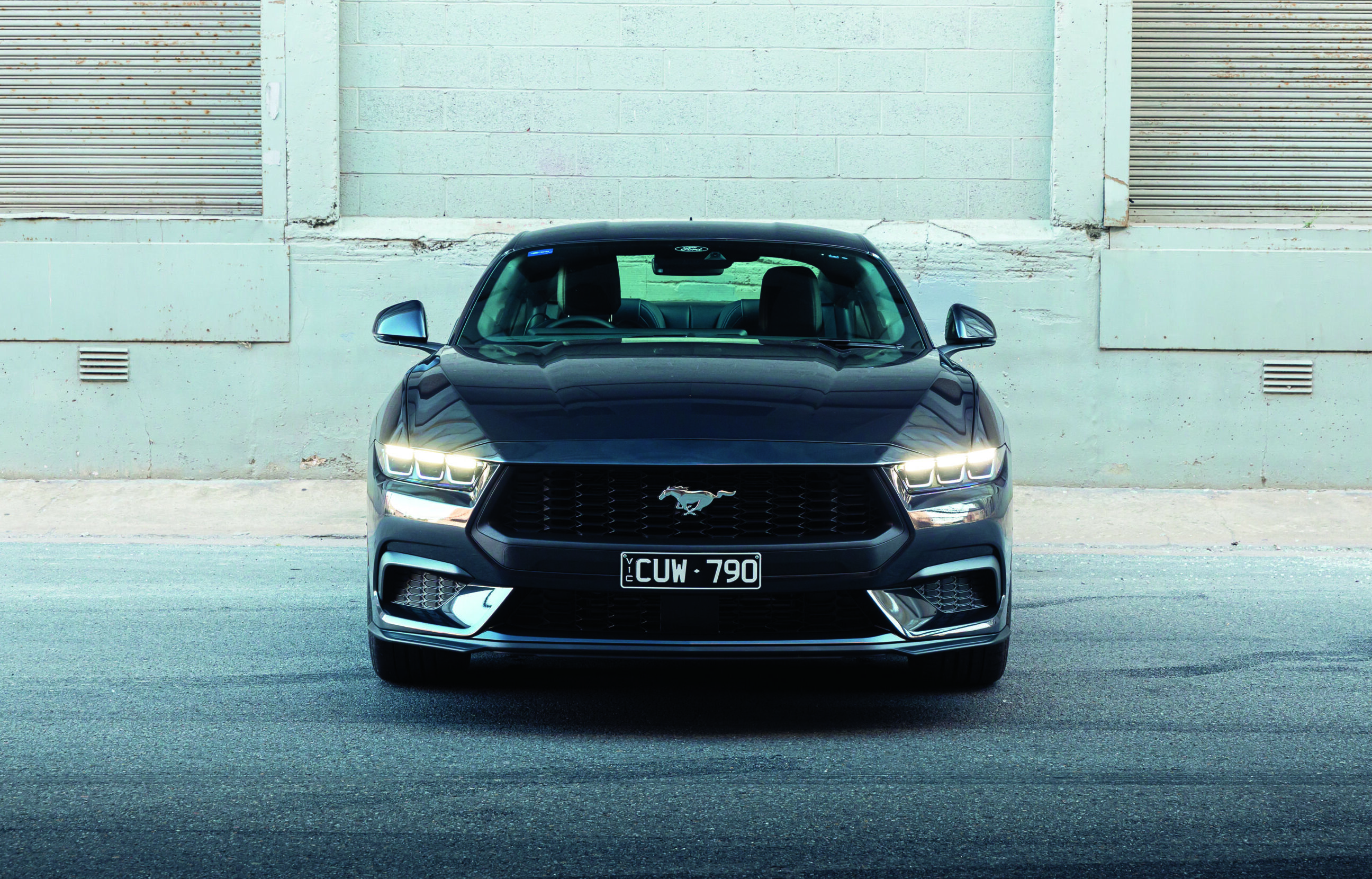Australia is the only major market in Mazda’s world that gets the CX-60, the CX-70, the CX-80 and the CX-90 SUVs. I have no shame in admitting that, prior to driving the CX-70, I genuinely had very little idea as to how they all meshed together.
Even now that I do understand it, I’m still a little leery of the logic behind it and can see how the average buyer might be flummoxed. Put simply, a CX-60 is a medium-sized SUV for a CX-5 customer with deeper pockets. If they want something yet more imposing and more premium, they can step up to the bigger CX-70, Mazda’s flagship two-row SUV.
That leaves the CX-80 and CX-90 to accommodate those buyers who need three rows of seats. Of these, the CX-80 is set to be the volume seller, with the CX-90 the premium option. In other words, if you are not making like an antechinus, a marsupial described as having a “frenzied mating period”, then the five-seat CX-70 might well pique your interest. It’s well worth a detailed look over.
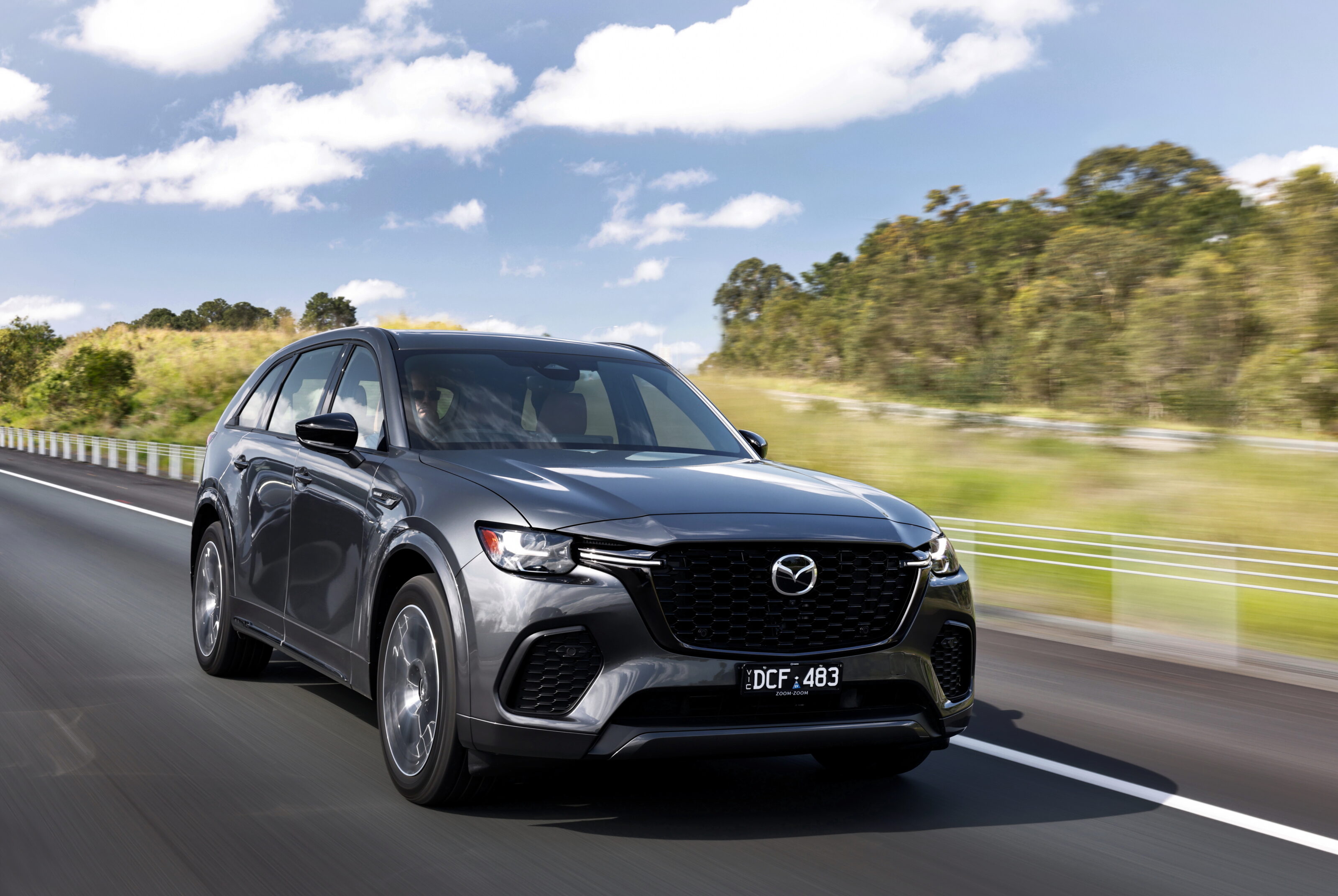
While some of the other variants on Mazda’s large-scale platform have suffered some teething issues, Mazda is trying to incorporate customer feedback into its vehicle development, with a suite of improvements to CX-60 incoming, and many of these updates have informed the thinking on CX-70.
It’s certainly a sizeable hunk. It rides on the same chassis as the CX-90, which means a huge 3120mm wheelbase, fully 250mm longer than the CX-60. At 5100mm long, it’s around 150mm longer than something like a BMW X5 or a Mercedes-Benz GLE, so you’re not getting shortchanged in terms of metal for your money.
Ah yes, the asking price. Mazda offer straight-six, mildly hybridised engines in the CX-70, mated to a rear-biased all-wheel-drive chassis. You choose from either petrol or diesel, with the latter commanding a $2000 price premium. There are also two trim levels, GT or Azami. The petrol G50e GT kicks things off at $75,970 before on-roads, with the Azami variant pitched at $82,970.
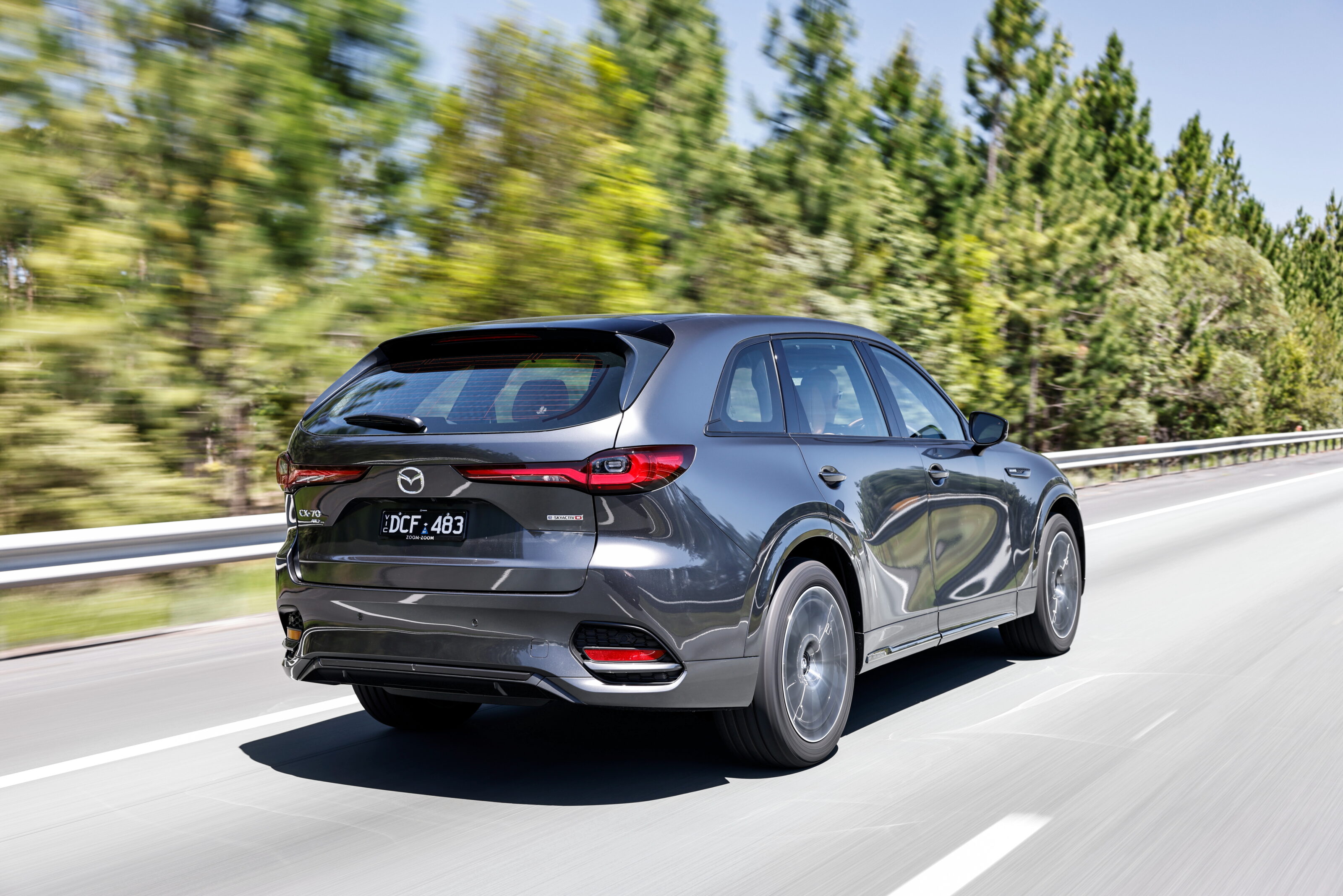
It’s definitely the looker of the bunch of contemporary Mazda big SUVs. It manages to avoid the slab-sided bulkiness of the other models, while retaining an element of the dynamic cab-back stance of the CX-60 that hints at its rear-biased torque split. Talking of which, there’s plenty to go round. The D50e diesel delivers 550Nm versus the G50e petrol’s 500Nm showing, although those positions are reversed when it comes to peak power. While the diesel makes a respectable 187kW at 3750rpm, the petrol unit is good for 254kW between 5000 and 6000rpm. The 2.5-litre PHEV is not an option for CX-70.
Both the GT and Azami are, as you’d expect for the price, well equipped. The GT rolls on 21-inch black metallic alloy wheels, gets adaptive LED headlights and a panoramic sunroof. There’s a Bose stereo with 12-speakers, a 360-degree view monitor, wireless CarPlay and Android Auto, a heated steering wheel, and leather-trimmed heated and electrically adjustable front seats with a memory function for the driver. There’s both a 12.3-inch colour central screen and a 12.3-inch TFT instrument panel.
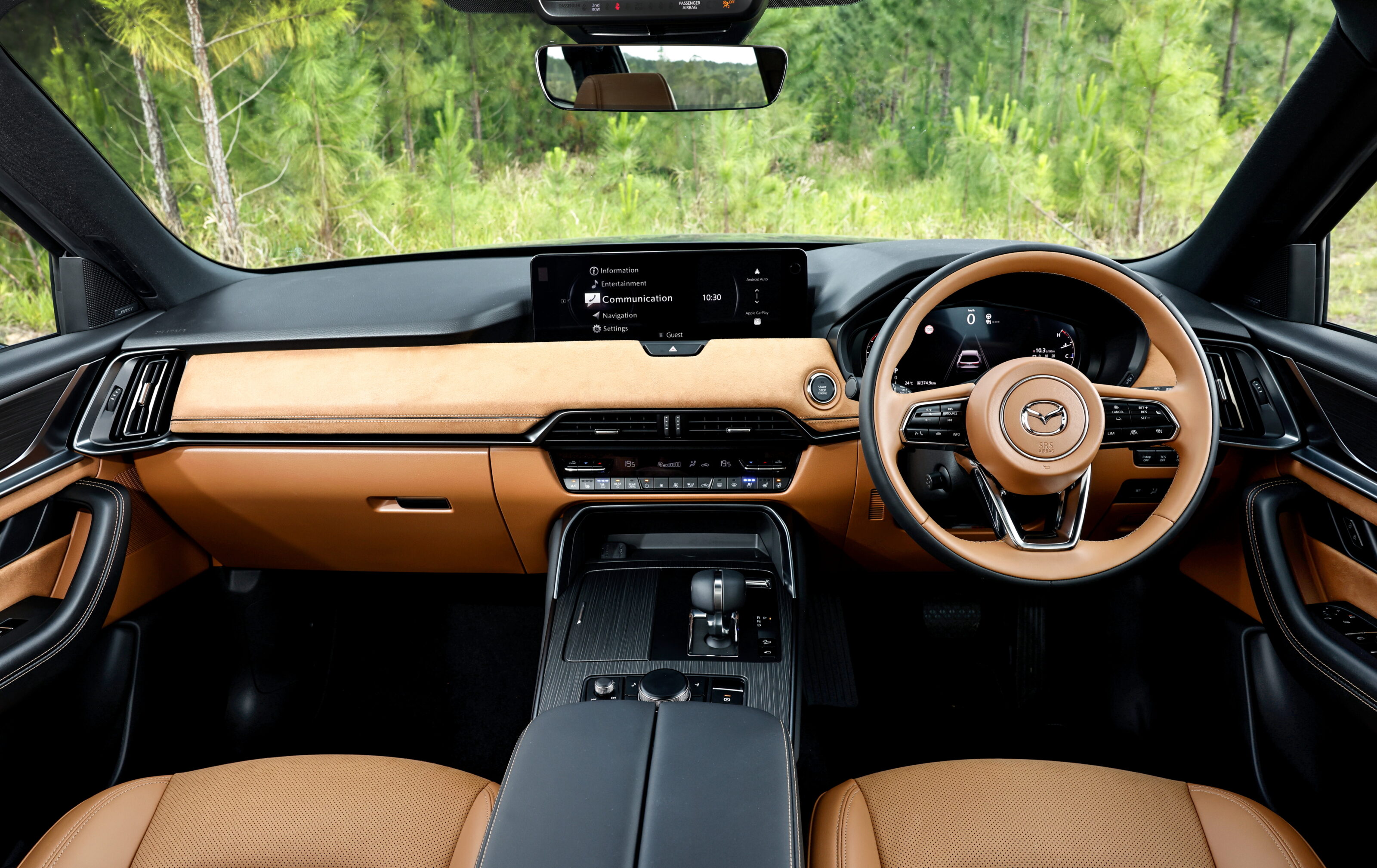
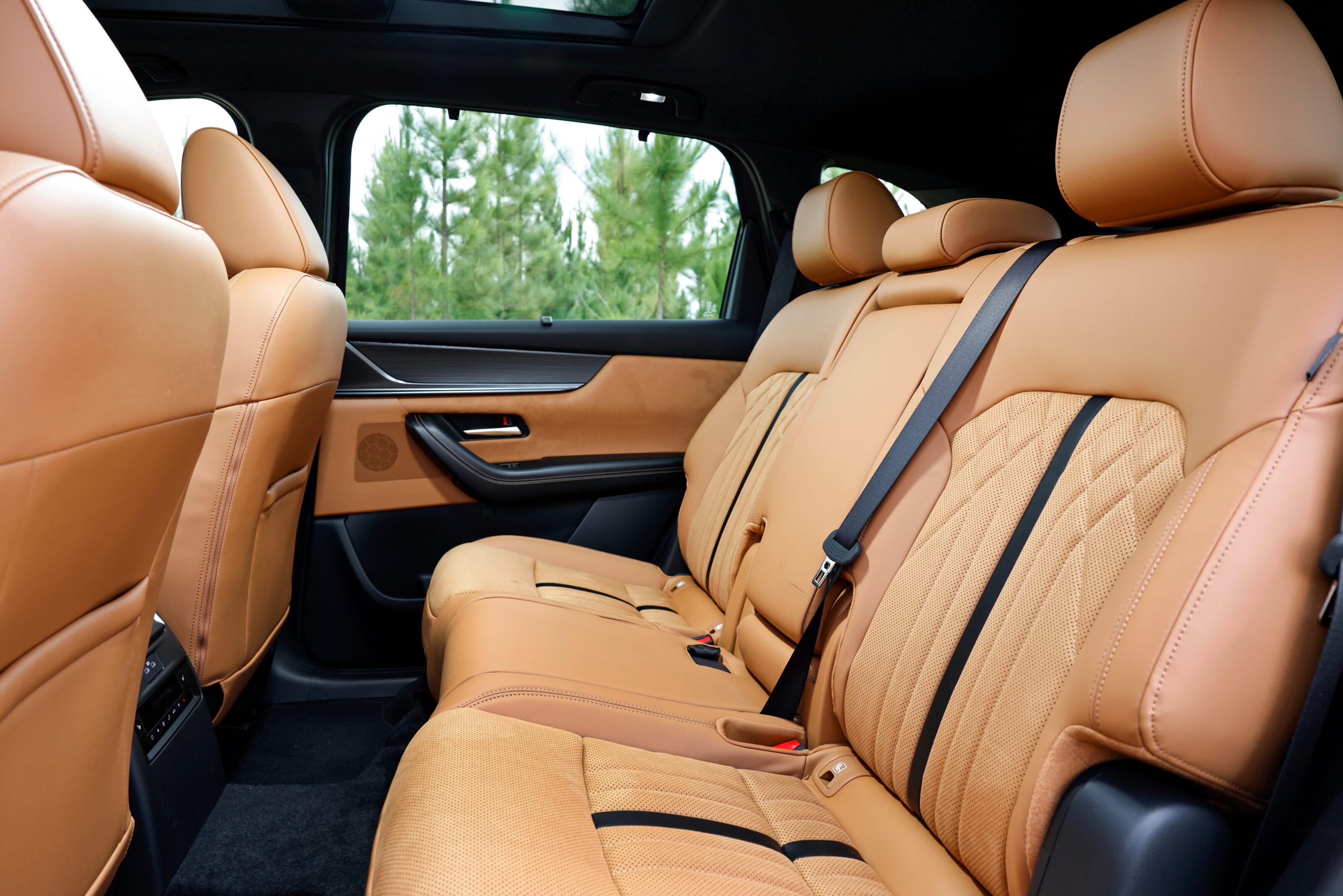
Throw another $7K at the Azami model and you’ll also get ambient lighting, quilted nappa seat trim in either black or burgundy, a frameless interior mirror, Cruising and Traffic Support (CTS), interior foot lamps, front ventilated seats, and a see-through-view for the view monitor. There are also some body-coloured exterior parts such as wheelarches, lower cladding and door handles. There’s also the option to spend another $3500 on the SP pack for the Azami which includes tan leather, a suede finish for the dashboard panel and a two-tone coloured steering wheel.
Choice is always good, but the law of diminishing returns does seem to come to the fore here, and the GT looks to be where the value lays.
Rivals for the CX-70 would probably include the likes of the BMW X5, the Mercedes-Benz GLE, the Audi Q8, the Genesis GV80 and the Lexus RX. Heck, you could probably throw Range Rover Velar and Volkswagen Touareg into that mix too. A Mazda mixing it with these brands? Jump inside the CX-70 and you begin to understand why that’s not such a long bow to draw.
It’s big, but it’s certainly not a case of never mind the quality, feel the width. Build quality seems very good and cabin materials are better than in most of the aforementioned rivals. Mazda still persists with the dashtop screen that is controlled by a dial. Yes, there is a setting whereby you can switch on touchscreen functionality, but it’s not very good, largely because the screen is out of reach, even for a person with gibbon-like arms such as me. Also, because when you do try to operate it, the heel of your hand will rest directly on the hazard warning light switch which, given the ergonomic excellence of the rest of the cabin, seems like a deliberate example of obstinacy from Mazda’s engineers.
Otherwise the interior is extremely well thought through. The front seating position is excellent and visibility is largely good, even with the chunky C-pillars. I experienced one incident where the vehicle phantom detected something as I was reversing and it threw on the brakes fairly hard, but otherwise there’s little to complain about. There’s plenty of oddments storage, with a deep centre bin, generous door pockets and a useable glovebox. Taller rear passengers might feel a little pinched for headroom given that the seat is high and the sunroof robs a couple of inches of headroom, but the rear seats have a decent slide and recline function to partially compensate.
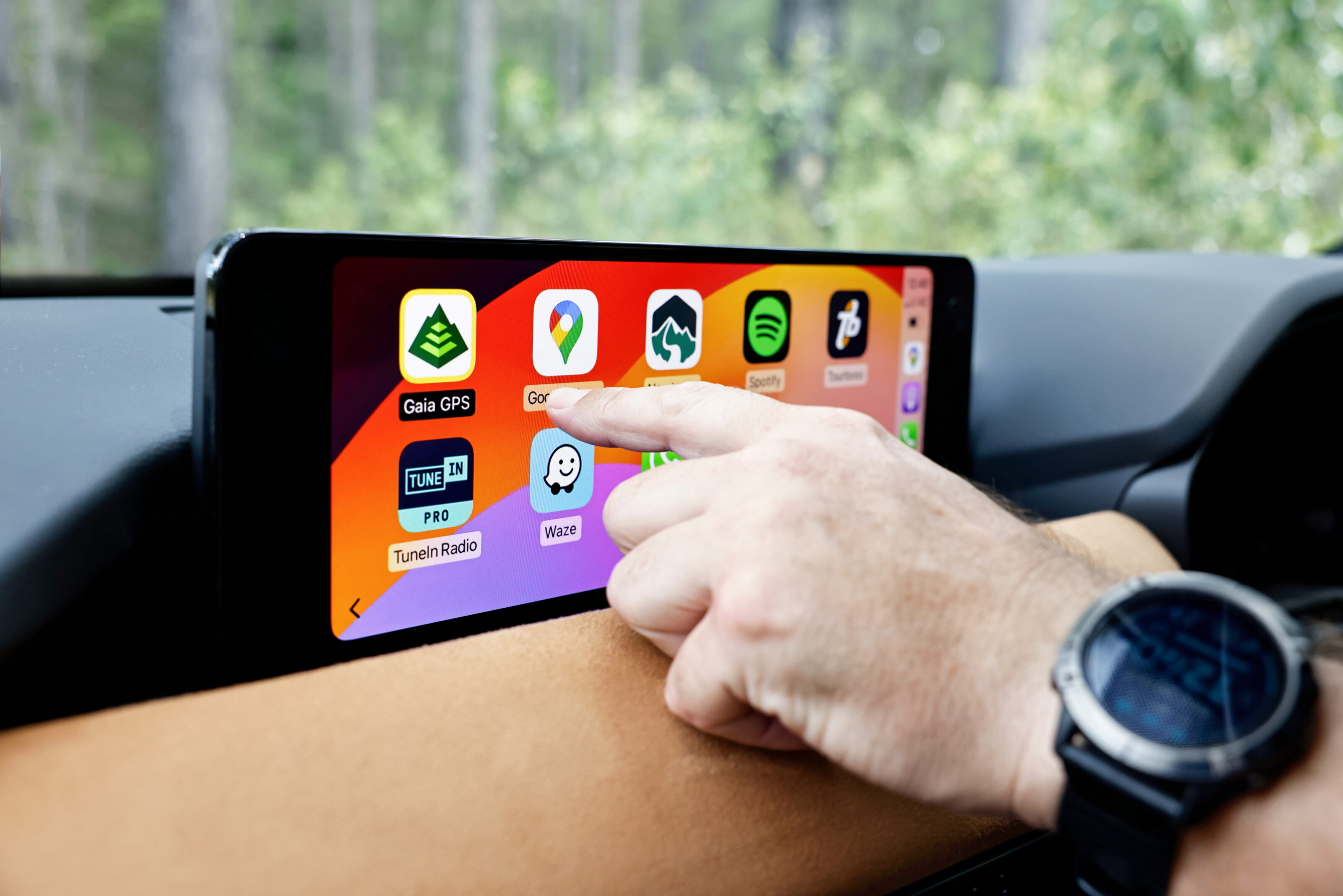
Another thing that some may grouse about is that the styling direction is virtually indistinguishable from a CX-60 or a CX-80 or a CX-90. Sit at the wheel and you’re greeted with pretty much the same architecture, the same twin-lidded centre console, the same screens, the same steering wheel design and minor controls placement. It’s all very Russian doll and it’s easy for manufacturers to get hidebound into specific design tropes and, as a result, customers to become bored by them over time.
We’re given the diesel to try first. I’ve driven both of these engines in other Mazdas and while I like these straight sixes, and applaud Mazda for building them, I must admit to a tinge of disappointment. They’re good rather than great engines, which is a bit of a shame when Mazda stepped so far outside the lane of conventional thinking to develop them. The CX-70 feels foursquare and alert, disguising the weight of that diesel up front. The 48V mild-hybrid system thrums the engine cleanly into life and adds a little torque fill at low engine speeds. The electric motor sits between the engine and the eight-speed automatic gearbox and, like all the best hybrid installations, does its work inconspicuously.
Body control initially seems excellent. Tip the CX-70 into a corner and it resists roll beautifully. The electrically-assisted steering initially feels a bit moribund just off-centre but weights up agreeably. It’s not particularly full of feedback, and it’s tyre squeal rather than anything coming back through the steering column that reminds you of the limits of the car’s front end grip. The CX-70 feels eager and unflappable, right up until that moment that it flaps. That moment will usually be brought about by a mid-corner bump or a compression. The former will set the car pogoing a little; the latter can sit the rear down hard onto its bump stops. While driving at sensible speeds on fairly well-surfaced roads, one bump was enough to launch a 20kg bag from the luggage compartment into the roof. Now imagine your children are located 20cm in front of that bag.
It’s all rather perplexing, as if there’s a fundamentally good platform beneath it which is let down by its damping. Even without extending the car, you’ll feel it nerfing and jostling frequently, expansion joints or lateral seams in the road surface sending sharp jolts through the passenger cell. The hardware is all really good, with double wishbones up front, a multi-link rear and an admirable focus on the geometrical rectitude of offset and camber control. It ought to be really good. Sadly it requires some remedial work and, at this juncture, outside engineering help would probably be beneficial in this regard.
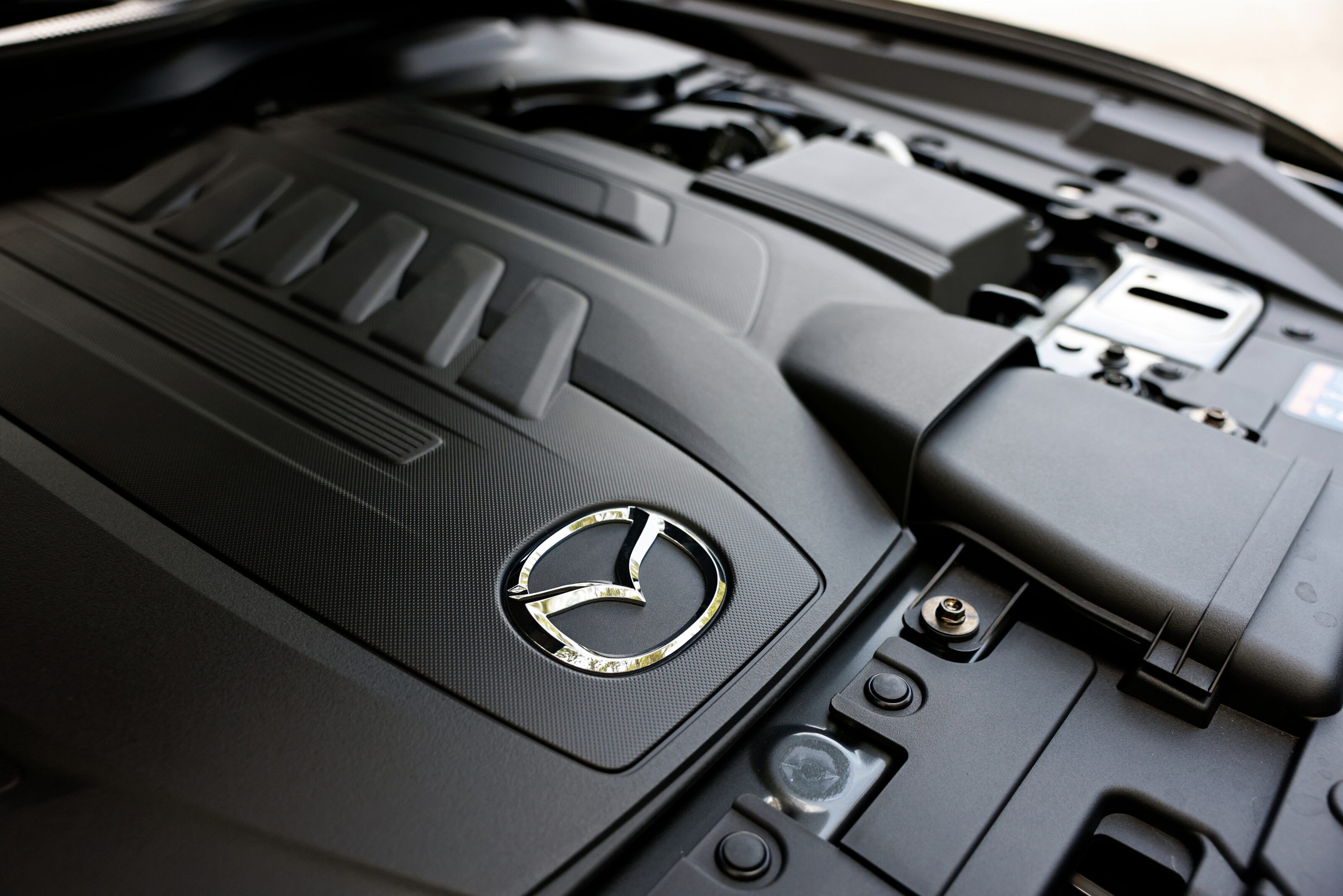
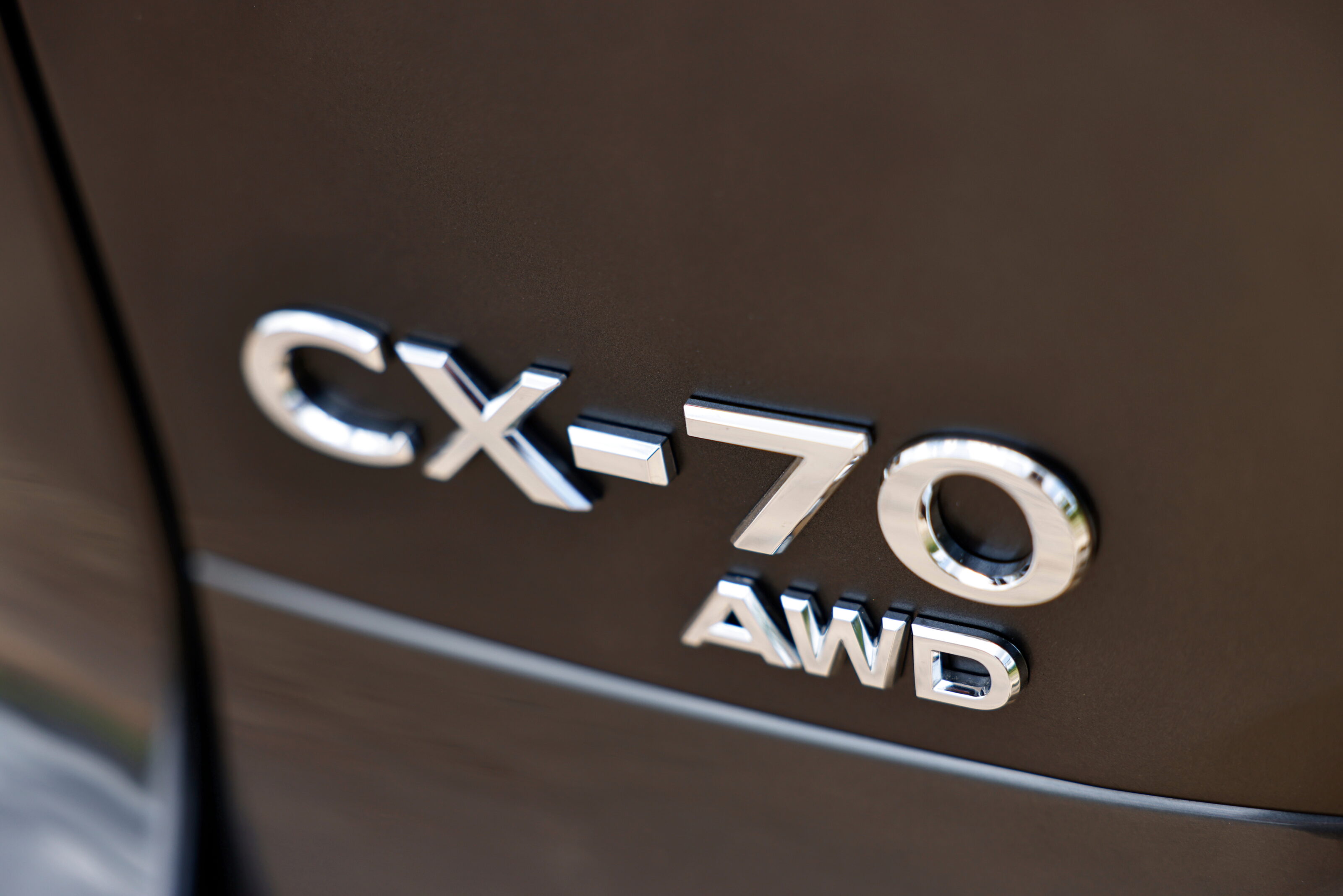
With less weight in the nose, the petrol engine feels marginally less susceptible to these vertical insults. Both powerplants have much to be said for them, and despite diesel being about as on-trend as a Diddy compilation album, anything that dials back the dynamism a notch or two is good for the CX-70. Part of me wonders whether it’s because Mazda no longer has a performance sub-brand, and has made such a thing of its jinba-ittai philosophy of the man and the machine being one, that the chassis engineers have culturally felt obliged to imbue sportiness into ranges of vehicles which could probably do with less of it.
There is otherwise much to commend the CX-70 for. Given that you’ve eschewed a pair of seats in the very back, you’re then treated to a vast maw when the powered tailgate opens. Mazda quotes 589 litres with the rear seats in place, which is a VDA measurement. Go to the roofline and you get 923 litres five-up. Fold the rear bench down and there’s 2015 litres available for a couples getaway. Should that still appear inadequate, there’s 2500kg braked towing capacity whether you choose petrol or diesel.
Ultimately, this is a very good car that’s let down by its mediocre ride. A vehicle with this wheelbase, in this price bracket, that need have no sporting intentions should deliver a greater impression of polish in the way it goes down a road.
What’s more, it ought to be a relatively easy fix. That this car has come to market with such a significant flaw is not what we’ve come to expect of Mazda. Hopefully a solution isn’t too far off, but until then, for all its other attractions, the CX-70 falls short as a properly rounded large five-seat SUV.
Specifications
| Model | Mazda CX-70 D50e Azami |
|---|---|
| Engine | 3283cc 6cyl, dohc, 24v, turbo-diesel |
| Max power | 187kW @ 3750rpm |
| Max torque | 550Nm @ 1500-2400rpm |
| Overall value | 4/5 |
| Transmission | 8-speed automatic |
| Economy | 5.4L/100km (combined) |
| Weight | 2216kg |
| 0-100km/h | 8.3sec (claimed) |
| Price | $84,970 |
| On sale | Now |


